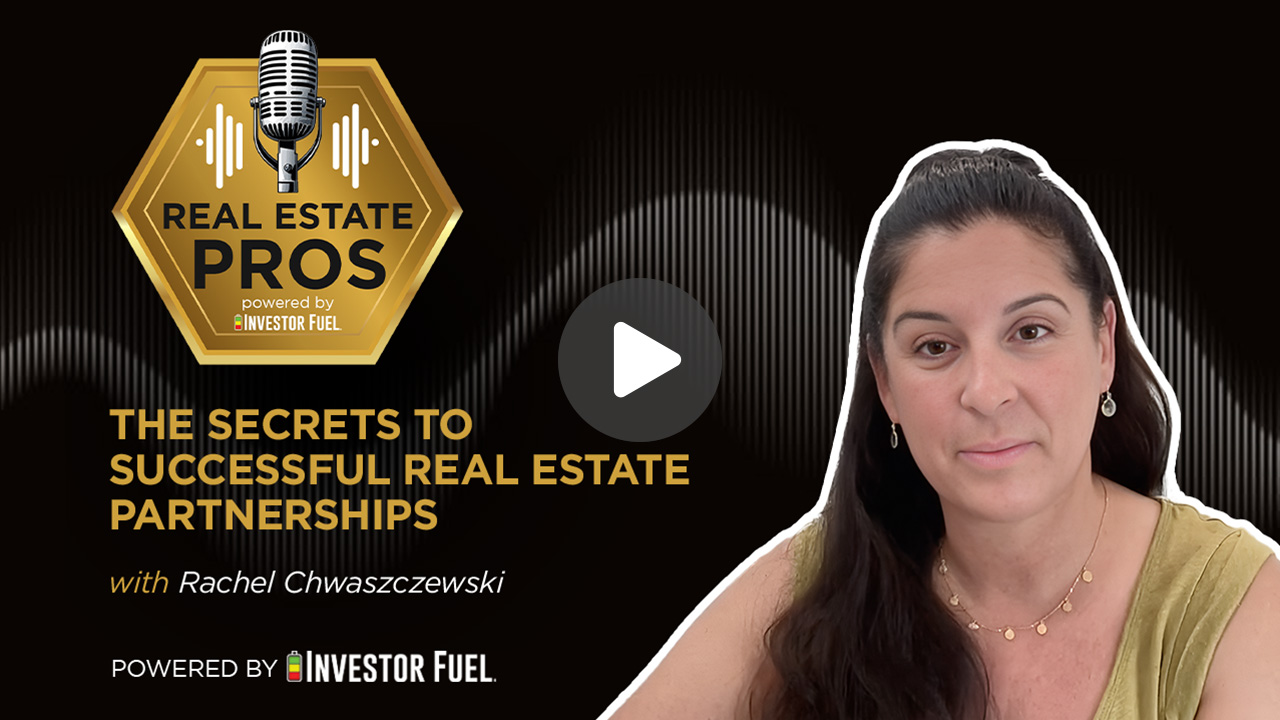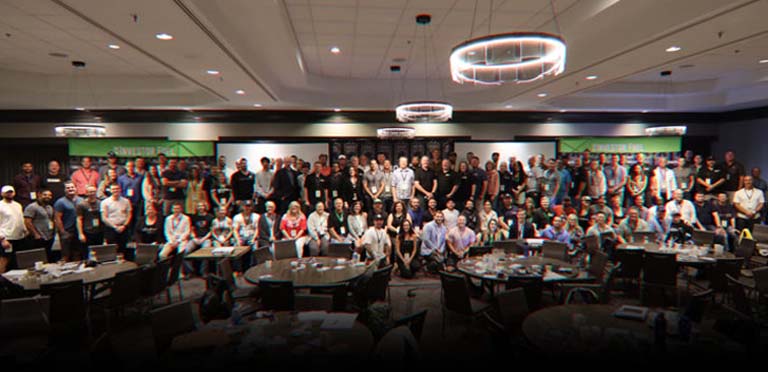
Show Summary
In this conversation, Dylan Silver interviews Rachel Chwaszczewski, a real estate entrepreneur with extensive experience in house flipping and new construction. Rachel shares her journey into real estate, starting from her early days in a title company to becoming a successful investor and builder. She discusses her first deal, the challenges of scaling her business, and the importance of understanding infill lots. Rachel also emphasizes the significance of partnerships in real estate and offers insights into the current housing market trends and future predictions.
Resources and Links from this show:
Listen to the Audio Version of this Episode
Investor Fuel Show Transcript:
Dylan Silver (00:01.428)
Hey folks, welcome back to the show. I’m your host Dylan Silver. And today on the show I have real estate entrepreneur, house flipper, large scale renovations, redevelopment, many different hats. We’ve got Rachel Chwaszczewski. Rachel, welcome to the show.
Rachel Chwaszczewski (00:19.138)
Yeah, thank you. How you doing?
Dylan Silver (00:20.702)
I always like to start off, yeah, pleasure to have you. I always like to start off at the top of the show by asking folks how they got into the real estate space.
Rachel Chwaszczewski (00:28.898)
Yeah, so mine was a job that I got right out of high school while I was going to college as a copy girl at a title company. But it was during the refi boom of the 90s. And so very quickly they needed more help and they offered to send me to school to become a licensed title officer. And I went and then I ended up working for that company for 12 years before I moved to the Carolinas. So that’s where I got my start. And during that time I was exposed to
flippers and redevelopers before it was sort of like a national pastime for the United States. They kind of came in and showed us, you know, from a title perspective, the deals, and I would see their HUDs and all that kind of stuff. So it piqued my interest.
Dylan Silver (01:15.124)
Did you know right then and there that you were gonna make a career out of it?
Rachel Chwaszczewski (01:20.398)
I knew that I was going to do something in it, like real estate related. did when we still lived in New Jersey, I got my real estate license. Sales was not my strong suit, so I ended up not sticking with that. But I really loved design and so they started mentoring me and answering questions for me and looking at deals with me. And so I knew that I was going to dabble in it. not, I don’t think that I thought it was going to be what it became, which is a whole lifestyle. So.
Dylan Silver (01:48.64)
Do remember that first deal? Was it a flip? Was it a rental? What was your first deal on your own?
Rachel Chwaszczewski (01:53.774)
My very first deal was actually our primary residence. We bought a foreclosure and did a 203k loan. This was with my now husband, but back then was my boyfriend and we bought it and renovated the whole thing and we ended up in that particular neighborhood being one of the highest the actual highest sale in the neighborhood when we sold and we realized that between my husband who was in construction and myself
We had a very good handle on a lot of the areas that we needed to be proficient in for the housing industry and being real estate investors.
Dylan Silver (02:34.442)
So you had a pre-foreclosure. Walk us through that deal. That’s an interesting way to acquire a property. That sounds like what I’m doing right now.
Rachel Chwaszczewski (02:41.72)
Yeah, sorry, I’m sorry. It was an actual foreclosure that HUD had. And we bought it off their list with a realtor who gave us great advice. He actually did primarily foreclosures and worked with investors such as ourselves. yeah, it was a really interesting time and a great learning experience for us.
Dylan Silver (02:45.672)
Okay.
Dylan Silver (03:05.45)
So you got that first property, did you have to do any renovations to it? Was it already the condition that you wanted it to be?
Rachel Chwaszczewski (03:14.206)
No, it was a full on, I’m not going to say gut job because we left the drywall up, but bathrooms, kitchens, flooring, paint. We refinished a basement that had not been touched since like the 1950s. So it was, it was a pretty good, healthy renovation for our first time out of the gate.
Dylan Silver (03:35.136)
And so you do that deal and then it’s your home, right? So you’re getting a taste for it. What was the next step for you? Were you thinking, I’m just going to start being a flipper? This was great.
Rachel Chwaszczewski (03:45.846)
Yeah, actually someone approached us. We did really well. And the end product turned out really well. And we had someone approach us and ask to partner with us, which we did. And it was sort of like an equity deal. We had part of it and the money and we were running it and he was supposed to be doing the work. It did not unfold the way that we had hoped. He sort of disappeared and we had to start hiring other people. So that was a huge, very…
very good learning experience for us out of the gate. Ultimately, it was fine and we did well and things sort of righted the ship righted at the end of the day and we did sell for a profit, but a huge learning experience for us.
Dylan Silver (04:28.734)
So what was it like scaling this business? Are you thinking, well, we’re going to be full-time flippers? Are you doing it part-time? Are you constantly looking for opportunities? Are you making a bunch of offers? How are you acquiring deals?
Rachel Chwaszczewski (04:41.378)
Yeah, so at this point we do a lot of spec houses. We do like scattered infill lots and we build new. My husband is a licensed builder in the Carolinas. And so, but for many, many years we did do just flips or additions and things of that nature. And so, yeah, we just hustled. We hustled all the time to find deals and make sure our pipeline was full. And then our area is insulated from a lot of
the other things that are happening in the rest of the country from the real estate market. And so we have enjoyed extended periods of time where the market has just continued to grow. And we started seeing an influx in particular areas that we were doing renovations of other investors. And so we would like find another area and start, you know, like the process all over again. And then we realized because we do have the construction piece, we
decided that finding infill lots was something that was going to allow us to scale quicker and easier.
Dylan Silver (05:45.918)
So you scale to the point where you find that infill lots, by the way, infill lots, brief description for someone who may be ignorant to the term, what is an infill lot?
Rachel Chwaszczewski (05:54.958)
So an infolot is basically a lot in an existing subdivision or community where a home may have been before and was torn down or for whatever reason, a lot never got developed, but it’s in an existing neighborhood, established neighborhood.
Dylan Silver (06:09.992)
And so these are going to have, you know, city water and sewer connections and electrical connections and be basically primed and ready for someone to develop property on.
Rachel Chwaszczewski (06:18.9)
On access to them, they’re not always there. Like you have to pay tap fees to get the the the wood or sewer run specifically to that lot. But yes, the access typically is a lot easier for the infrastructure pieces when you’re inside that neighborhood.
Dylan Silver (06:34.504)
And so before you were doing the infill lots, when you were doing the flips and doing additions and so on and so forth, were you finding these deals through word of mouth? Were you going off market for these deals? Were you making a bunch of offers on the MLS? How were you scaling to the point where you are today?
Rachel Chwaszczewski (06:51.502)
On really all of the above, in the beginning, the very first house that we bought, our attorney actually, was trying to unload. It was a home that was abandoned. And he offered it to us for $5,000 because it was basically like a tear down. There were squatters. And so that kind of kicked it off. And then once we started that home and people saw sort of the response that we got and what we sold it for, more people started kind of seeking us out and saying,
You know, we have this property. Are you interested in buying it? And signs, we always had signs in the front of our jobs that we were doing. We got actually a lot of homes via the signs. Like people just driving by and stopping and saying, hey, I have this or my mom’s selling this. And then yeah, MLS of course. And then just word of mouth.
Dylan Silver (07:30.654)
lot of leads.
Dylan Silver (07:40.756)
So you and your husband, is there one person who does the marketing, one person who specializes in one thing, or what’s the roles like in the business relationship there?
Rachel Chwaszczewski (07:50.474)
Yeah, we definitely have delineated roles. On the front end, from an investment perspective, we both sort of find them and decide this is something that is going to be part of our pipeline. And then from there, because of my background, I take over and I get, you know, the deal closed, get financing in place, and then I hand it over to our construction company, and then the construction company builds it out. And then when it’s done and it’s ready to hit the market, it gets turned back over to me.
And I work with our team of realtors to get it listed and sold and, you know, attend closing and do all that kind of stuff.
Dylan Silver (08:27.21)
So, you know, when I think about scaling a business, I think about having strategic partners. I think what better partner than maybe in the same house family, right? But a lot of people sometimes struggle with that. Did you know when you met your husband that this is maybe a potential business partner or was this something that came along the way, you know, when you realized, well, we did the flip, that worked out pretty well. Let’s see how this goes.
Rachel Chwaszczewski (08:48.478)
Yeah, so in the very, very beginning when we first met on yes, we kind of knew that we were always going to probably dabble in it. And at that time we had, we both had nine to five jobs. He actually was the superintendent for a flooring and national flooring company. And he oversaw the installation of whole developments. And so with our backgrounds and our experience levels, we kind of always knew that we would be in real estate. It wasn’t until
after the recession actually though. Cause during that time it was very difficult. He was a superintendent for a national builder. He got laid off. I had a new construction related business. I lost the business literally overnight. And so at that time we were just doing flips and they were like higher end flips. And we decided after the recession that we were going to
switch our strategy, our exit strategy, just like everything we were doing. We went into rentals, whereas before we did not have them. And we just really started to kind of dig in and say, we think we can do this. So I was doing it, he was still working in corporate and I was doing it on my own. And then after a couple of years, we were able to take him out of his corporate job and he came on full time.
Dylan Silver (10:06.036)
That’s the goal for, I think, lot of real estate entrepreneurs is, well, how do I find someone where I can be like, hey, take a look at this deal, take a look at this deal? When you think about this, this is where I’m thinking we make the offer at. Because I feel like 50 % of the reason why people have business partners is just because they don’t want to be the only one with the thought. It’s like, I don’t know if this is a good idea, let me bounce this off somebody.
Rachel Chwaszczewski (10:26.06)
Yes. Yes.
Dylan Silver (10:26.9)
You know, I’ve seen a lot of people, I think you have a title background, right? So people with a title background, my personal mentor invests in, know, fix and flip properties and his wife is a title officer. So, you know, I think about these opportunities and I think, you know, how do we all get so lucky here? So congrats on having that part of your life there. It’s really a blessing. Scaling to where you are today with the infill lots, you know,
Like you previously said, with infill lots, you’re talking about undeveloped areas, maybe within a subdivision, but for whatever reason, just not built out. How are you finding these lots? Is it based on your knowledge of the area? Is there a way that people can find infill lots in general?
Rachel Chwaszczewski (11:12.77)
Yeah, so it’s a little bit of both, right? Like we understand our market intimately where we are. We have partnerships with local housing agencies that have land banks and sometimes they’re unable to build on the lots for a variety of reasons. And they’ll come to us and say, we have, you know, these couple of lots, are you interested in buying them? And generally we are, there’s not much that scares us off. You know.
For people who are looking to get into it, finding those nonprofit housing agencies is a great way to kind of get into the market. And they’re generally in the areas that are affordable to get into with the housing agencies. And then of course, your municipality generally sells off things. And yeah, word of mouth, MLS, people offer us stuff now because we’re known in the community, but.
Yeah, there’s lots of different ways to find them. And then there’s always just driving the areas, which we still do actively, especially if we’re going into a new neighborhood or a new area, we always drive it to understand, you know, who the demographics gonna be that we’re building for, you know, what price point, all of the different things that go into making that decision on the floor plan and the finishes and pricing.
Dylan Silver (12:30.41)
I suspect there’s a lot of maybe probate with these types of things. Is that common or is that not common?
Rachel Chwaszczewski (12:36.896)
yet that is another avenue probate or tax liens, things of that nature. That’s specifically in our area. There is a window that they can come back and redeem. So that’s not something that we actively do, but I know that other people have had success in it.
Dylan Silver (12:54.12)
Okay, you’re, a lot of the cells that you’re dealing with maybe, you know, for whatever reason a home was taken down, who knows, fire. Do any of builders still own these lots? I mean, who’s the typical owner of an info lot?
Rachel Chwaszczewski (13:07.426)
Yeah, it’s usually an error. As you mentioned, know, someone who’s trying to sell it or an older person or the municipality. We’ve had like code enforcement. They have homes where they’re just constantly at and they’ll come to people like us and say, this home, you know, really needs to be torn down or the seller can’t do the upkeep. Are you interested in purchasing it? And we’ll say yes. And they’ll connect us with the owner.
and then we’ll work out a deal with the owner directly.
Dylan Silver (13:38.878)
Now, if someone, I’m a wholesaler by trade, so I’m thinking about this from a wholesale standpoint. If someone wanted to buy an infill lot in an area that’s very desirable, a builder or someone’s gotta take a look at that, but also the builder’s gotta.
look for these deals themselves. So they’re also kind of looking at getting it for, you know, pennies on the dollar, so to speak. So if I’m a wholesaler and I’m trying to lock up an infill lot at a price which is good for a builder, how do I know what to base my comps off of? Because the stereotypical thing for wholesalers when we’re looking at fix and flips is 70 % of ARV minus repairs. So is it a formula like, well, I know what it’s going to cost to build
Rachel Chwaszczewski (14:00.856)
Yes.
Dylan Silver (14:22.24)
this home, whatever cost is for it. And then I know what people are paying for homes in the area, so if I’m able to get this lot for less than all in the cost of homes in the area, minus the build cost, then I should be okay. Or is it more complex than that?
Rachel Chwaszczewski (14:43.246)
No, I mean, that’s a pretty good handle on it. So from a perspective of like real time numbers, what we look at is generally not going above 20 % of the finished product. So for us, and we do a lot in the workforce housing arena, which that price point is anywhere from like 285 to 335, depending on the neighborhood. For us, 50,000 for the lot is really kind of the top end.
of where we are willing to pay, but that is including, you know, if we have to do tap fees and things of that nature, which can be a very per, you know, permitting office and municipality, but just as like a benchmark, generally about $4,000 for a water and sewer tap. And so we kind of back out of that. Like if 50 is a shovel ready lot where we’re ready to rock and roll and we don’t have to pay for those types of things, then that’s the top of it for our.
particular product. But that 20 % mark gives you a little bit of a wiggle room. So you can go up if you think the area is going to increase or you adjust down based off of what the comps are telling you.
Dylan Silver (15:54.536)
And so are you working with investors, meaning they’re hiring your company out to do a lot of these new builds? Are you doing a lot of the new builds and then owning them yourself as a little bit of both?
Rachel Chwaszczewski (16:04.374)
Yeah, a little bit of both. We do deal with investors in the renovation more so than in the new construction, but as investors ourselves, we build a lot of new construction and we do retain some of them for our own personal portfolio, as well as just selling them on the open market to home buyers, not necessarily investors, but just your typical, you know, buyer.
Dylan Silver (16:26.378)
team.
Dylan Silver (16:31.552)
Do you think there’s a way for someone who’s starting out getting into real estate investing, I’m not sure how much money they might have, but they’re looking at different strategies and they’re thinking, well, I flips are a little bit more difficult now, maybe margins are a little bit less, and if someone’s gonna put a bunch of money into a home and they’re looking at rehab versus a new build, they’re gonna go new. How can I get into infill lots and new builds? Is there a way for someone who’s starting out to get into this, or you kinda gotta work your way up?
Rachel Chwaszczewski (17:01.809)
So I think both, right? Like if real estate, of the most desirable things about real estate really is, is that you can create your own destiny. There’s so many options. There’s so many ways to do things. And if I were newer and coming into it and flips are a little bit tight, like you said, you know, the margins are a little bit tighter. And I was trying to get into new construction. I would 100 % find partners and people.
who had the experience that I did not have and then partner with them and do some sort of JV because, know, new construction is easier from the perspective of the actual build out rate, because you’re not retrofitting problems and trying to do all those things and undoing and then redoing. But, you know, there still is room for error. And so you want to have people that have experience and can…
talk you through that and help you and hold your hand for sure.
Dylan Silver (18:00.028)
That’s for sure. mean, as a flipper yourself, you know that as soon as you take up, you know, the subfloor, now you’re looking at the foundation, you’re like, what is even this? In some cases, and then you know, based on the decade that you’re in, here’s the problems which are likely, and the wiring is going to be, you know, maybe, or the foundation, you know, however thick, whatever, right? I’m not, this is not my area of expertise, but I’ve seen it. So, to your point, yeah, it’s a lot to undertake.
Rachel Chwaszczewski (18:06.51)
Thanks.
Dylan Silver (18:26.824)
I’m curious to get your perspective right. No one has a crystal ball per se, but your perspective on maybe the next, you know, six, twelve months, maybe year and a half, how things might change, because we’ve seen going from flips to a lot of people doing new builds. Are we going to see a lot of people getting into new builds? It doesn’t seem that easy for me. I’m like, well you got to have a lot of knowledge base. Are we going to see more people doing new builds?
Rachel Chwaszczewski (18:52.318)
you know, I think if the right partnerships are formed, absolutely. I truly believe, as do a lot of the people in our network and where we live and work here, that the local investors are really going to be the ones that help to stabilize the housing market. There are so many things going on, right? That are just awry, that are impacting what is happening, to the housing industry. and there’s just too many to list cause it’s all just sort of.
Everything came to a head simultaneously, right? We came out of COVID and then you have the baby boomers and you know, they’re not moving and there’s so many different things happening. I really think that new construction will continue on. I know the larger builders have contracted some given that the rates have not adjusted and you know, there’s still some concern from the buyer’s perspective. I think one of the largest things that we are struggling with is that people keep waiting for the interest rates to drop.
When in reality, I don’t think that we’re going to see the rates as low as we saw during COVID. I think that was like an artificial situation. So waiting for that continued rate to hit, I think is a mistake. I think you have to deal with the reality of where we are, whether you’re a buyer or an investor and kind of make decisions based off of that. With that being said, though, I do think that the housing market, if we even have a slight decline in interest rates,
will probably then be offset by the amount of people coming into the market. So any gains that buyers have had with prices declining and softening a little bit are going to be overtaken when you get sort of everybody jumping back into the market. And I don’t think we’re gonna have a frenzy like we did during COVID where things were just off the rails with people making offers. But I do think that it’s going to ratchet back up.
Dylan Silver (20:40.562)
I was buying, yeah.
Dylan Silver (20:45.15)
Yeah.
Rachel Chwaszczewski (20:48.622)
If we hit anywhere from 4.5 to 5.5, 6%, and stay steady there, I think that’s a good place from an overall staying power and interest rate for everyone involved.
Dylan Silver (21:03.168)
I know there’s a lot of real estate developers, investors, people who are hoping for the same thing. Rachel, we are coming up on time here. Where can folks go to get in touch with you, learn more about your business?
Rachel Chwaszczewski (21:15.596)
Yeah, so if an investor is looking for a construction company or even consulting on what kind of finishes, what kind of floor plan, things of that nature, we have two ways to get a hold of us. Number one is through our consulting company called Intentional Property Advisors. And we work with existing and new investors to help them kind of figure out what their path is and help them roadmap it out so that they can get to their goals or.
Practical Luxury Builders, which is the construction arm of our company.
Dylan Silver (21:50.014)
Rachel, thank you so much for coming on the show here today. Congrats on all your success and to your continued success.
Rachel Chwaszczewski (21:56.344)
Thank you. Thank you for having me.







